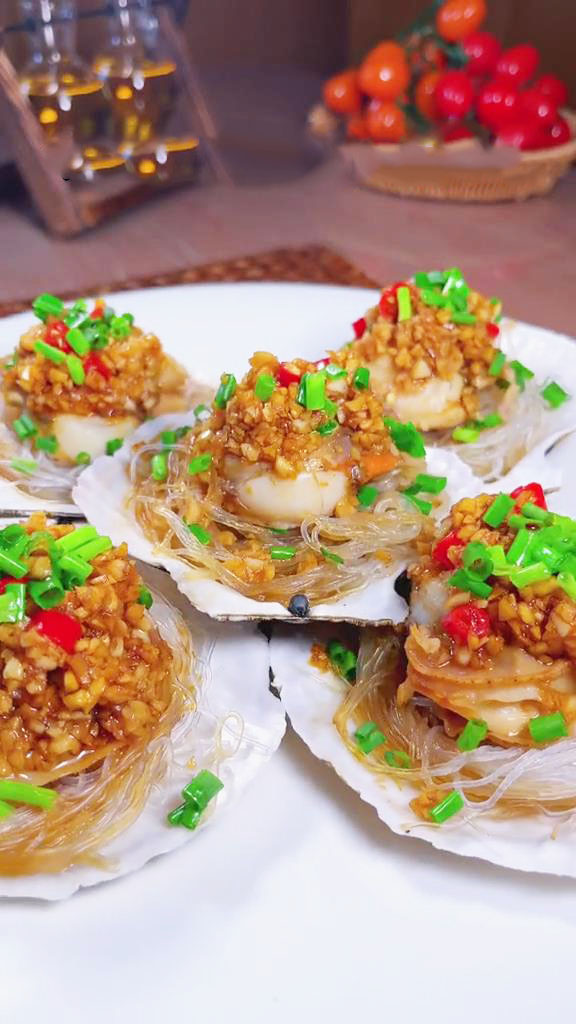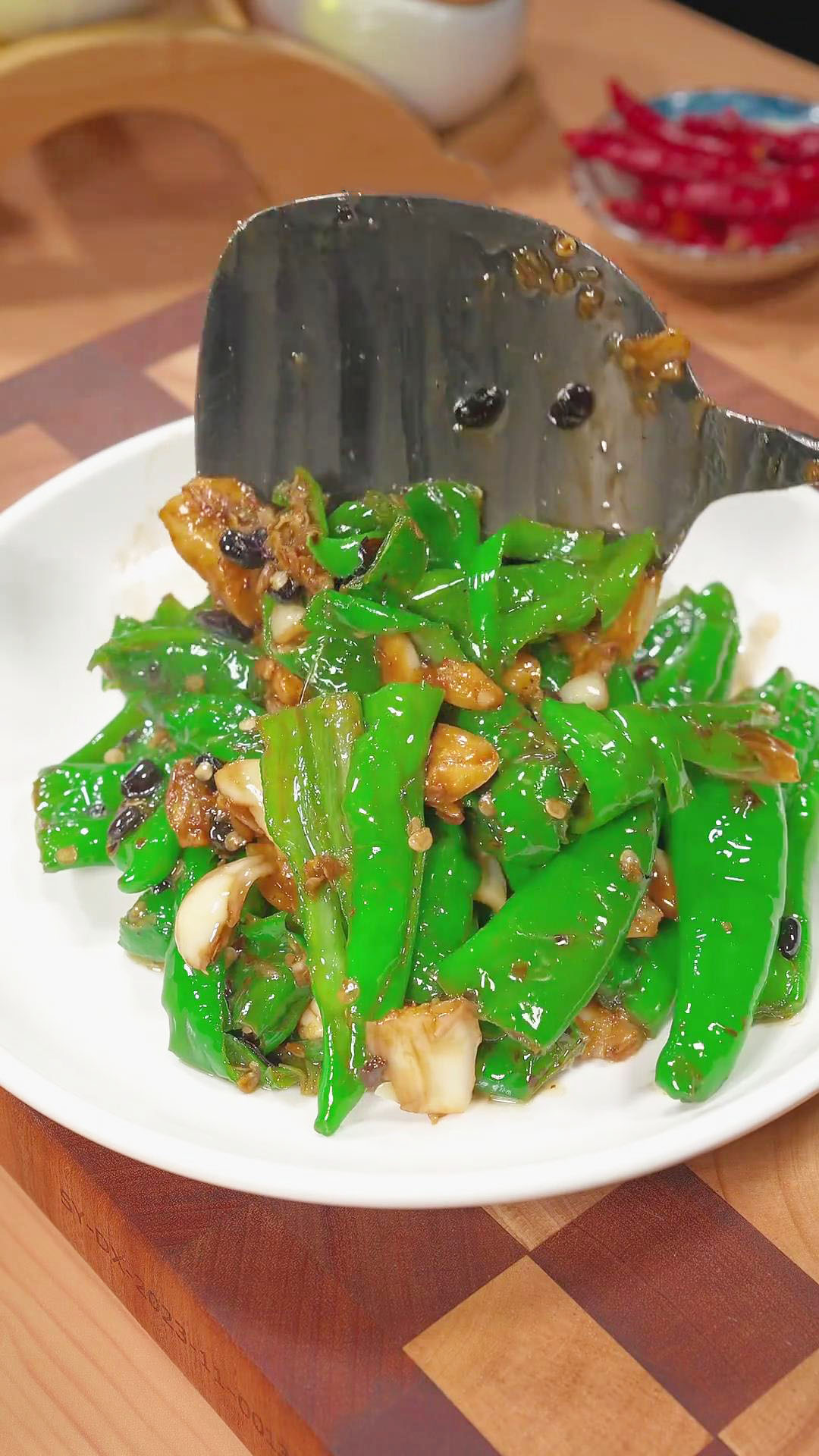This post may contain affiliate links. Please read our disclosure policy.
A celebratory feast won‘t be complete without Chinese-style steamed fish. It is seasoned to perfection with a savory sauce made with chopped red onions, green onions, ginger, coriander, light soy sauce, and a bit of sugar. You will love how delicious and flavorful this simple dish is by doing only basic cooking steps, such as stir-frying and steaming,
Why You’ll Love Chinese-Style Steamed Fish
I love how versatile this recipe is since you can use your favorite type of fish and would still go well with the spicy and savory sauce. You will only need a few pantry ingredients for marinating the fish and stir-frying the sauce ingredients. The steps are simple and easy, but you will just have to put extra effort into slicing the fish in a decorative way for a more beautiful table setup, which I will show in detail with my tutorial video.
In a nutshell, preparing the fish calls for cutting off the head and tail and slicing through the belly. The fish is marinated with aromatics and steamed for about 6-10 minutes.
The last important step is drizzling the savory sauce all over the steamed fish, which gives the fish a really good oomph!
If you want to add a pop of color and crunch, garnish the steamed fish with chopped green onion and chili.
I love a good sizzle, so I also incorporated hot oil, an excellent ingredient to fuse all the wonderful flavors of the spices.
Do you love fish recipes and are looking for more variety? Then, give these recipes a try:
- Hong Kong Curry Fish Balls
- Savory Tomato Garlic Fish Balls Soup
- The Best Homemade Fresh Fish Balls Recipe
- Fish In Black Bean Sauce
- Salt And Pepper Fish
What Type Of Fish Is Best?
Whether you are using a whole fish or filet, it is always best to go with fresh fish for the tastiest and most tender results.
But if you are going for frozen fish, make sure to use the plain ones and avoid the ones that are seasoned already since this may not pair well with the sauce of the recipe. I recommend any whole white fish, such as catfish, cod, dory, flounder, grass carp, grouper, haddock, halibut, pollock, sea bass, snapper, and tilapia, to name a few.
Skinless or boneless fish filet is also a great option. You can use a thin or thick fish filet, such as those in my recipe for fish in black bean sauce, but you will have to adjust the cooking time based on the thickness of your chosen filet. Of course, the thicker the filet, the longer the steaming time.
Now, I also have a list of fish to avoid that may not be the ideal pairing for the sauce and for steaming. First, I don’t recommend oily fish, such as sardines, mackerel, mullet, swordfish, and bluefish. Moreover, I would steer away from fish that dries easily like marlin, bonito, kingfish, and tuna.
Steaming Techniques For Steamed Fish
Don’t get me wrong, steaming is an easy process. The only tricky part is knowing how long the fish should be steamed to prevent it from drying out from over-steaming. In this recipe, I steamed the fish for just 6 minutes.
How to know if the fish is cooked with the ideal texture?
However, the time may still depend on the type of fish, size, and thickness. So, in order to be sure the fish is cooked properly, use a butter knife, chopstick, or fork to poke through the fish. If it pierces through easily without difficulty, then the fish is done.
If not, continue cooking for intervals of 1 minute until the fish is cooked evenly. You want to cook 1 minute at a time to avoid overcooked fish with undesirable rubbery flesh. The texture you are going for is tender but still moist.
What equipment is best for steaming?
Whether you use a regular steamer or traditional pan steaming, any method works as long as you achieve the desired taste and texture. Use a regular steamer if you want to make the recipe steps easier. If you don’t have a steamer, you can still steam without a steamer in 5 ways: pan with steamer rack, microwave, pan with sieve, rice cooker, and instant pot.
For a traditional way of steaming, I recommend steaming the fish in a deep pan with a steaming rack or bamboo steamer basket, ensuring that the size of the fish fits comfortably within the steamer.
Make sure to have a lid to cover the pan and a heat-resistant plate to withstand the boiling water. In my recipe tutorial video, my steamer setup is as follows:
- Place a stainless steel steaming rack in the pan.
- Put water and bring to a boil. The level of water should be lower than the steaming rack.
- Then, place the fish plate for steaming on top of the steaming rack.
- Cover the pan with a lid.
What To Know About The Ingredients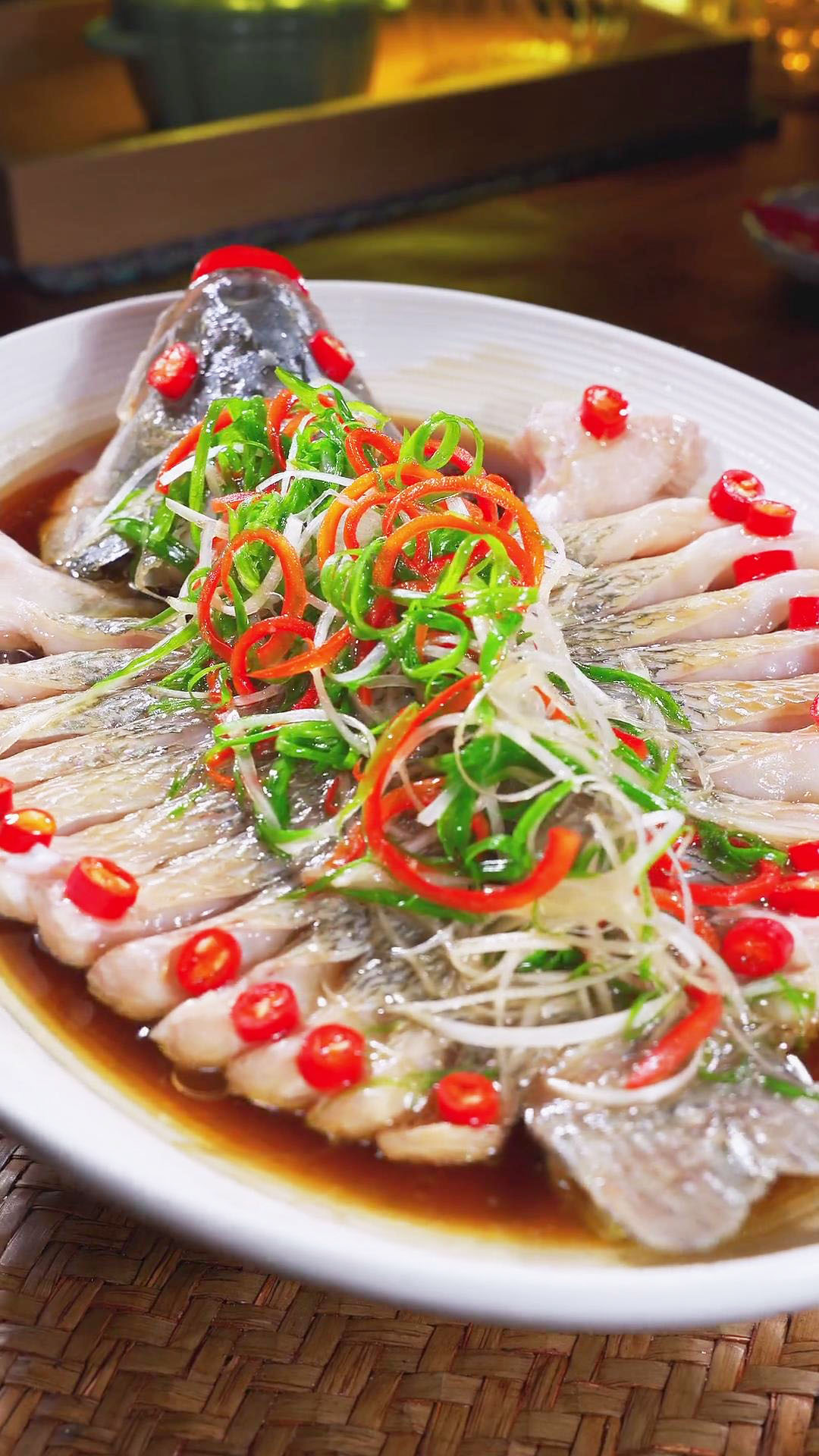
Now that you know more about the type of fish to use and steaming techniques, let’s dive into more ingredient tips and alternatives.
You can customize the dish according to what’s available to you and how you want the taste to be. Here are some suggestions to consider when altering the dish:
- Whole fish: When buying your fish, you can ask the store to remove the gut and scales to lessen your preparation time. However, make sure to mention that you would like to keep the head and tail on. To prepare the fish for the marinade, rinse it with water to clean it properly. I cut the fish’s head and tail, then opened it in half and removed the bones. When the fish is flat opened, I slice the belly in thin straight or diagonal cuts. The thin cuts help it cook faster and absorb the flavor easily.
- Marinade: For more flavor absorption, I marinated the fish with green onions, ginger, salt, and cooking wine. This also helps remove any raw or fishy odor before steaming.
- Green onions: The marinade is infused with the mild sweetness and oniony taste of the green onions. Swap this with chives, shallots, white onions, yellow onions, or red onions if needed.
- Ginger: Add a warm, peppery taste to the fish with slices of ginger. You can swap fresh ginger with ground ginger. Use 1/4 to 1/2 tsp ground ginger for every 1 tbsp of fresh ginger.
- Salt: Any marinade won’t be complete without a bit of salt to boost the flavors. Use any type of salt, such as sea salt, pink salt, and kosher salt.
- Cooking wine: It is the cooking wine that removes the fishy odor and dissolves fat in the fish. Moreover, cooking wine helps tenderize the meat and keep it moist. This also imparts a slightly sweet and briny taste. You can swap it with cooking sake, dry sherry, meat or vegetable broth, red wine vinegar, or alcohol-free wine. Remove this from the marinade if you can’t consume alcohol.
- Lard or oil: Before steaming the marinated fish, I brushed the outer part with lard. Lard is made from pork fat that adds a richer taste. Refer to my lard-making recipe for instructions. You can swap lard with vegetable shortening, butter, or vegetable oil. Alternatively, you can simply use ordinary oil, such as olive, avocado, sesame, or safflower oil for a healthier option. If you want a neutral taste, go for peanut, soybean, or vegetable oil.
- Sauce: The sauce is the ultimate flavor of the fish. I stir-fried sliced red onions, green onions, ginger, and fresh coriander before adding light soy sauce, water, and sugar. The amount of sauce depends on the size of the fish, so you may have to adjust and season to taste.
- Red onion: Generally, any kind of onion will work well with the recipe with little difference in taste. I went for thin slices of red onion because I liked its peppery taste and sweetness. You can replace this with yellow onions, white onions, shallots, sweet onions, and green onions.
- Green onions: Aside from red onions, I added more stalks of chopped green onions. Swap this with chives or more red onions if needed.
- Ginger: Ginger adds peppery and sweet flavors and a warming kick to the sauce. I cut the ginger in strips or julienned. You can swap fresh ginger with ground ginger using 1/4 to 1/2 tsp ground ginger for every 1 tbsp of fresh ginger.
- Coriander: The third ingredient for the stir-frying step is fresh coriander. This adds a tart and lemon-like taste to the sauce. If you don’t have fresh coriander, you can use coriander powder instead. You can swap fresh coriander with parsley, mint, or basil, but the taste will be a bit different.
- Water: Water is used to dilute the flavors. You can use plain water or vegetable broth. If you want to add extra flavor to the water, add a dash of bouillon powder or Italian seasoning mix.
- Light soy sauce: The base flavor of the sauce is from the light soy sauce. It lends the sauce an umami and salty taste. Dark soy sauce is fine, but you will have to adjust the amount since it is thicker and sweeter than light soy sauce. Tamari, liquid aminos, coconut aminos, and gluten-free soy sauce are also excellent choices.
- Sugar: The sugar will balance out the flavors of the sauce ingredients. Use sugar to adjust the taste, especially if you don’t like the sauce to be too salty. You can use any type of sweetener, including white sugar, cane sugar, brown sugar, maple syrup, or coconut sugar.
- Garnish: I love adding garnish for a pop of color, a kick of aroma, and decoration. I sprinkled a generous amount of chopped green onions and chili peppers on top before pouring the hot oil.
- Green onions: Green onions add a bit of crunch, as well as a mild, sweet, and oniony taste. I thinly sliced the green parts to form rings. You can also add the white part of the green onion if you prefer.
- Red chili: Chili is great for extra heat. You can use green or red chili peppers. I also chopped this into rings. If you are not a fan of spicy flavors, do not add this as your garnish. If you like it spicy but don’t have whole chili peppers, use chili flakes or powder and adjust according to your desired level of heat.
- Hot oil: After assembling the garnish and pouring the sauce over the fish, I drizzled hot oil on top for that extra sizzle. This also partially cooks the green onions and chili peppers. On top of that, it gently crisps the surface of the fish for better texture. Since you will be needing hot oil, I recommend using oil with a high-smoke point to reduce the amount of oil oxidized and to withstand heat longer. Oils with a high smoke point are avocado, peanut, canola, and corn oil. For a healthier alternative, use olive, avocado, sesame, or safflower oil. For a neutral taste, go for peanut, soybean, or vegetable oil.If you want the sauce to be extra nutty and earthy, go for sesame oil.
What You Need To Prepare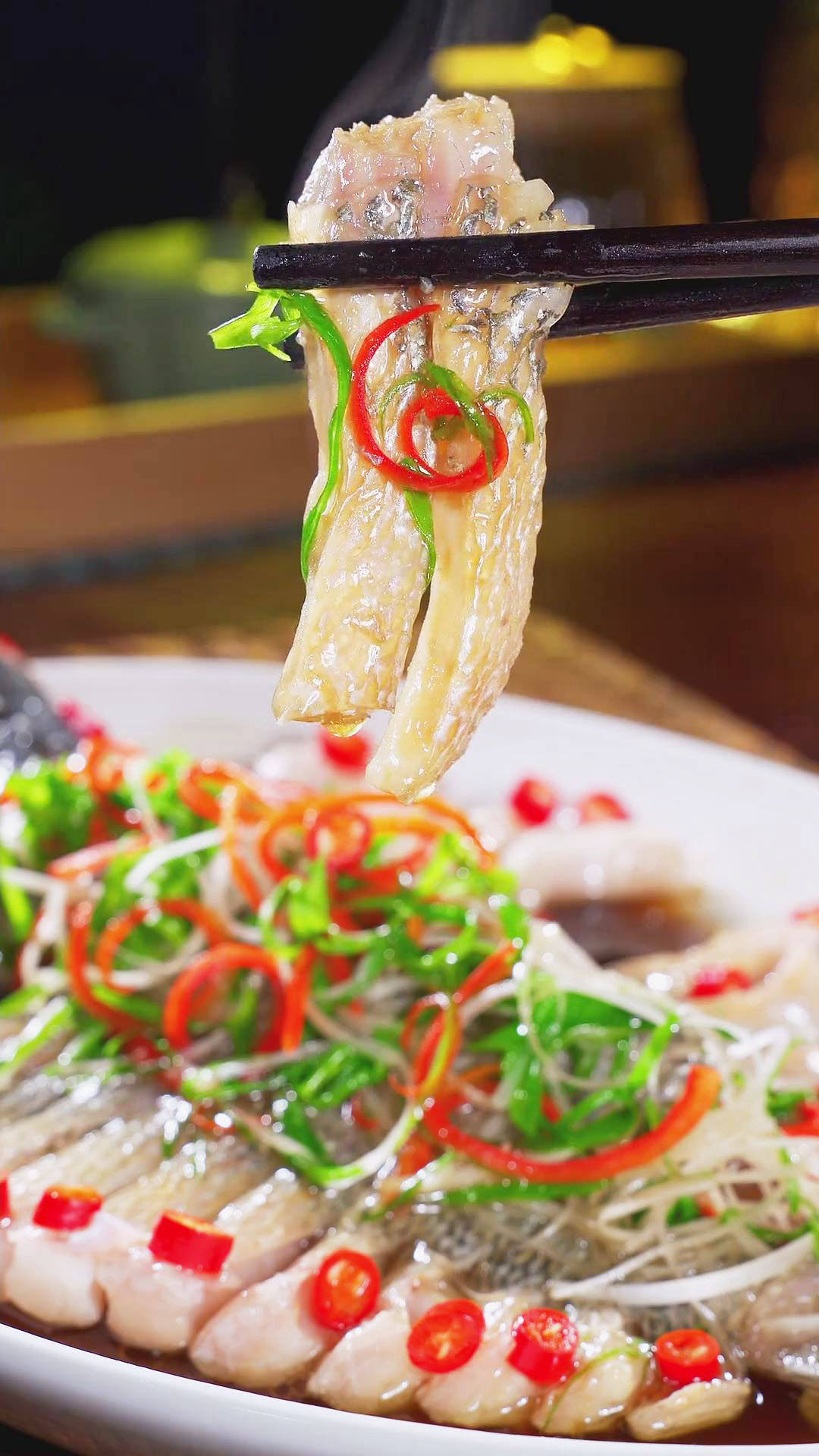
The things you need are simple, just a knife for chopping, a bowl for marinating, and a pot for steaming. If using the traditional way of steaming, make sure to use a heat-resistant plate to withstand the heat of the boiling water from steaming. As for the ingredients, I listed below the amount but you will have to increase or decrease it based on the size of the fish you have.
- 1 whole fish, I used sea bass.
- For the marinade:
- 10g chopped green onions
- 10g sliced ginger
- 1 tsp salt
- 1 tbsp cooking wine
- Lard or oil (for brushing)
- For the sauce:
- 1/2 red onion (thinly sliced)
- 10g chopped green onions
- 10g sliced ginger
- 50g fresh coriander
- 1 tbsp water
- 1 tbsp light soy sauce
- 1 tsp white sugar
- For the garnish:
- 1/2 cup chopped green onion
- 1/2 cup chopped red chili peppers
- 1 scoop hot oil
10 Steps To Make Chinese-Style Steamed Fish
The entire recipe steps can be finished in 20 to 30 minutes. Simply chop, marinate, steam, and season the fish. To get a clearer picture of how I chopped and decorated the steamed fish, watch my quick tutorial guide on Instagram or TikTok.
What have you done to customize this steamed fish recipe? Share your creations and ideas by leaving a comment in the comments section. Don’t forget to tag me @kitchenmisadventures so I can see how you did it!
- Chop the fish. Start by cutting off the head and tail, then carefully trim off the middle bone using scissors.

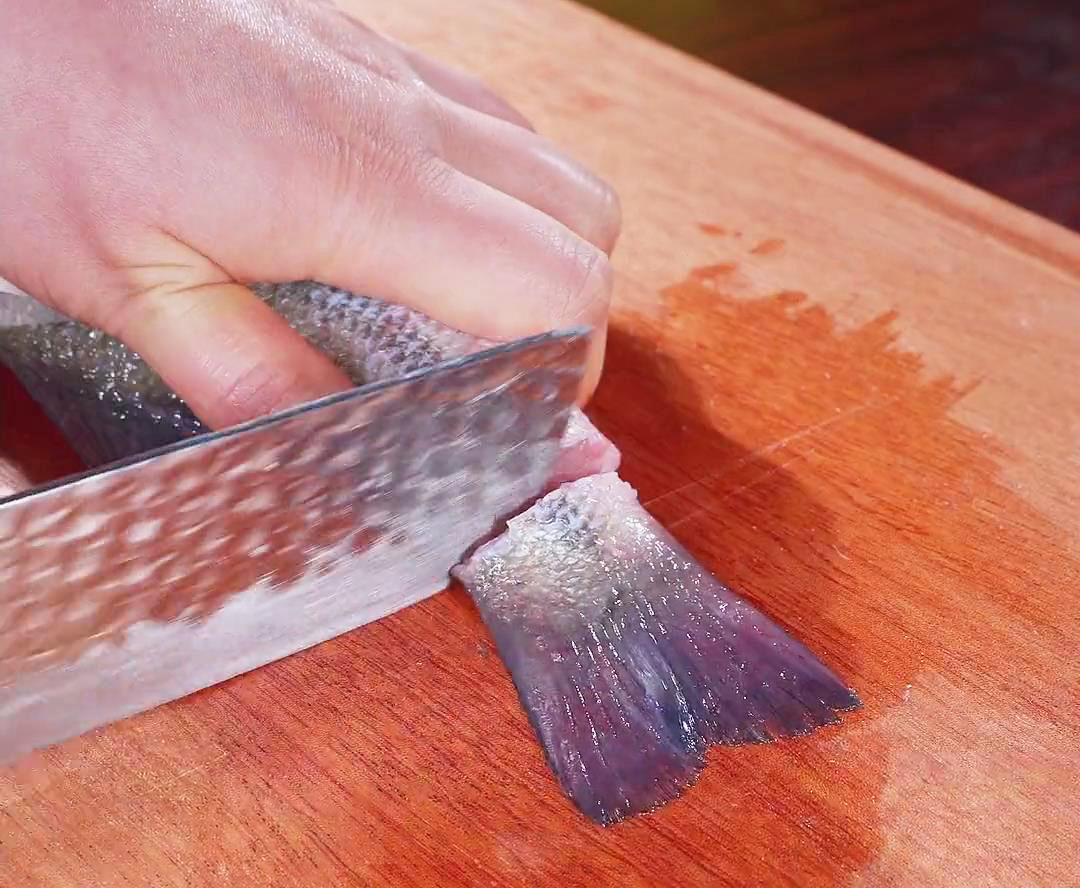
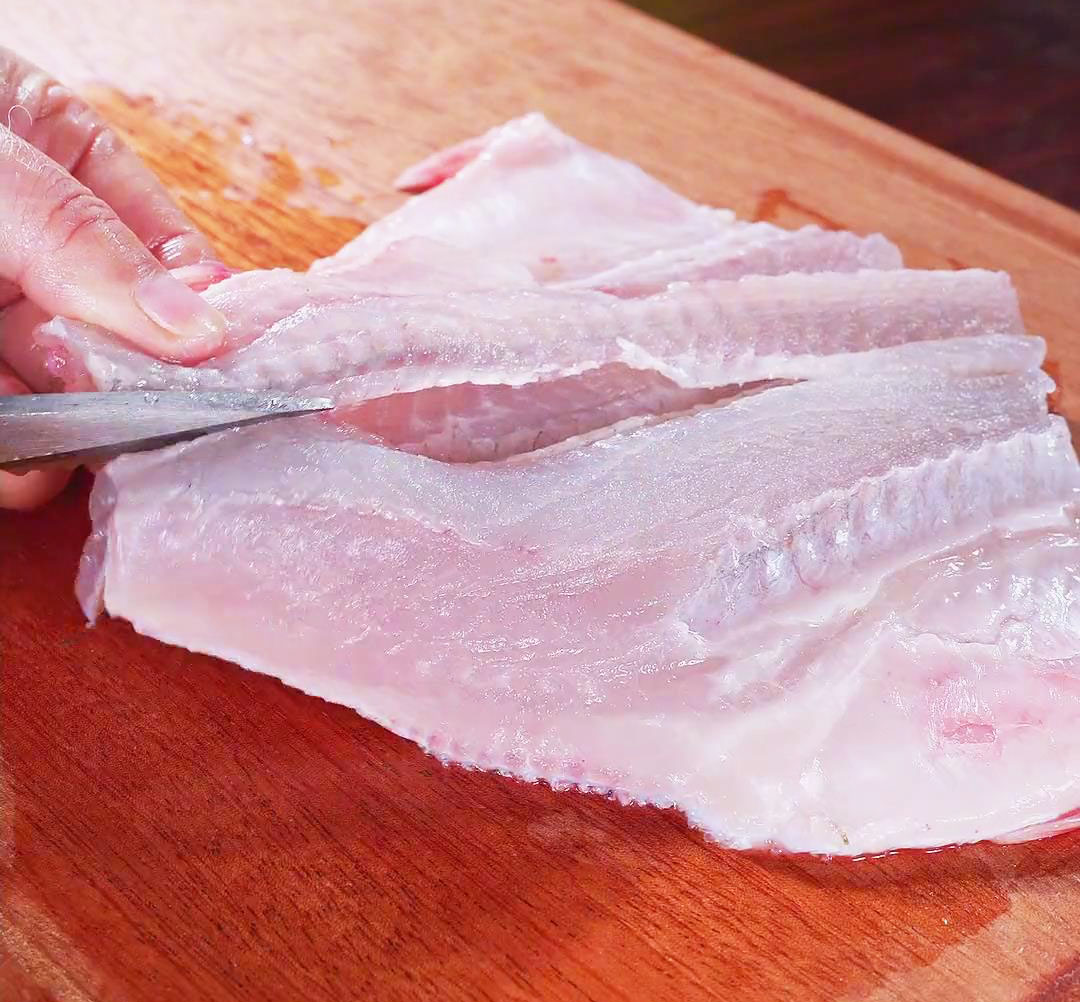
- Take the belly and flatten it. Cut each side of the fish into straight or diagonal thin slices. Cutting the sides helps cook it faster and absorb the flavors better.
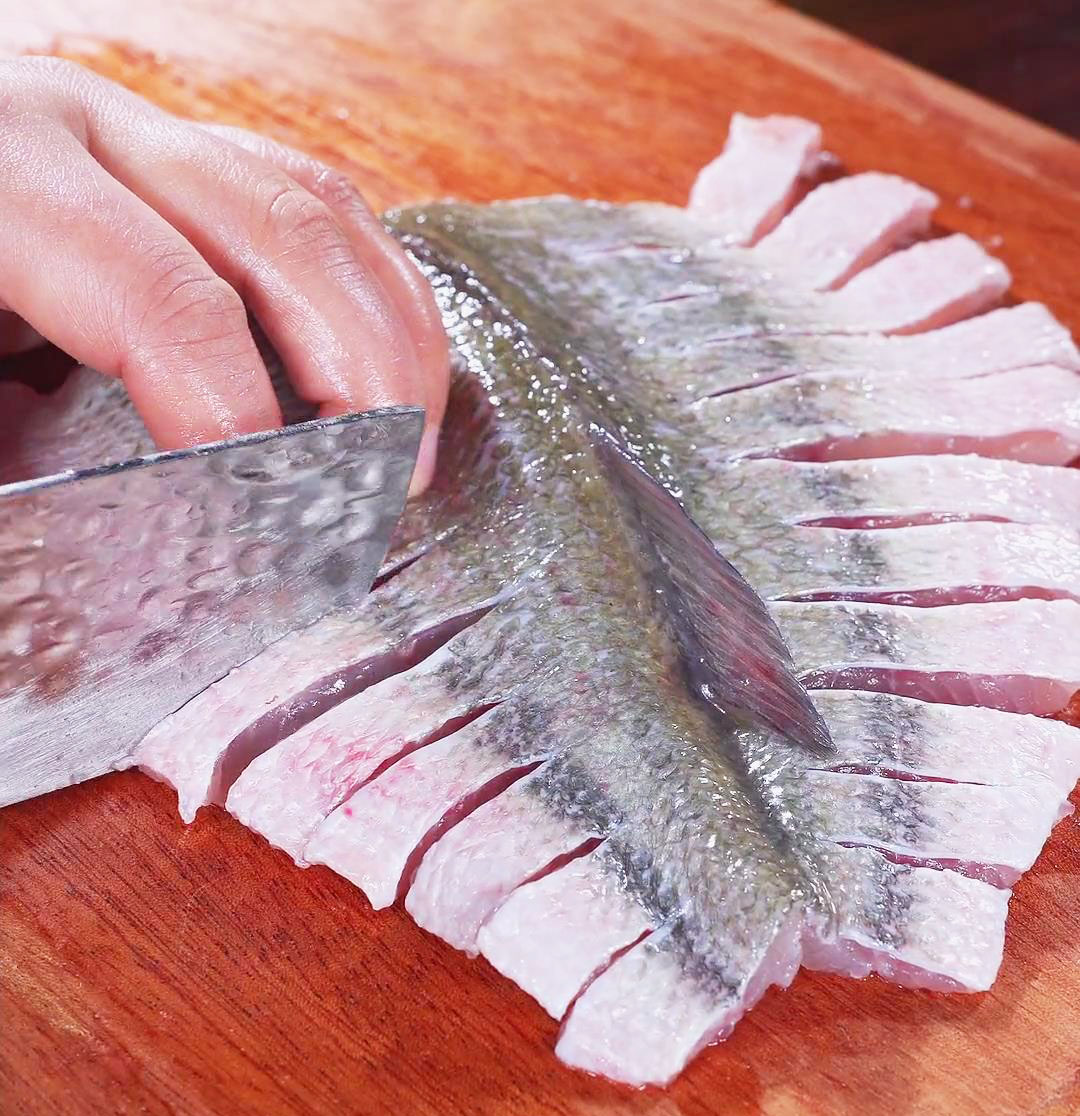
- Marinate all parts of the fish with chopped green onion, ginger, salt, and cooking wine for 10 minutes.
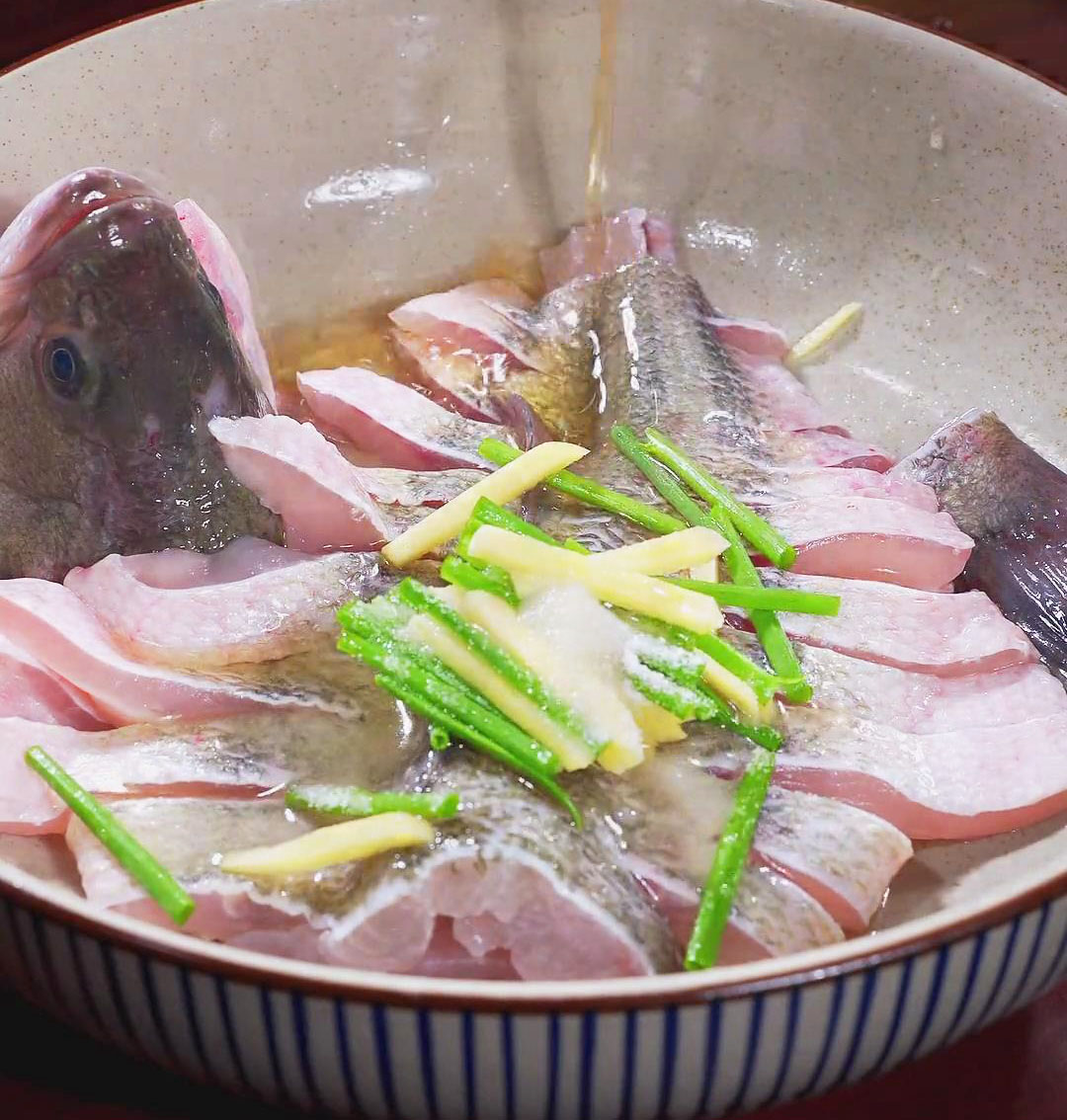
- Rinse well with water to remove any fishy odor.
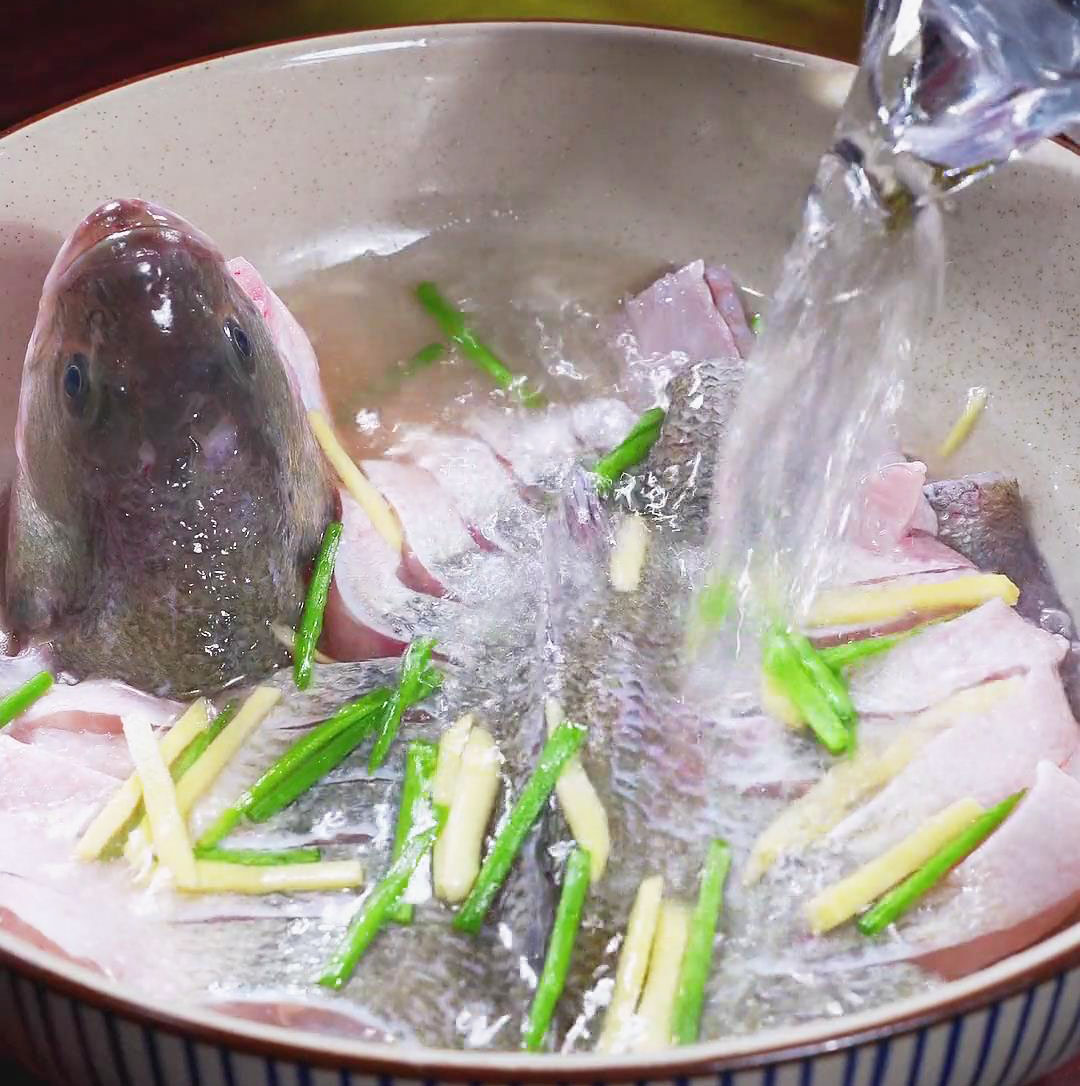
- Drain the fish and place it in a steaming dish. Carefully flip each strip of the sliced belly to let the flesh side face the top.
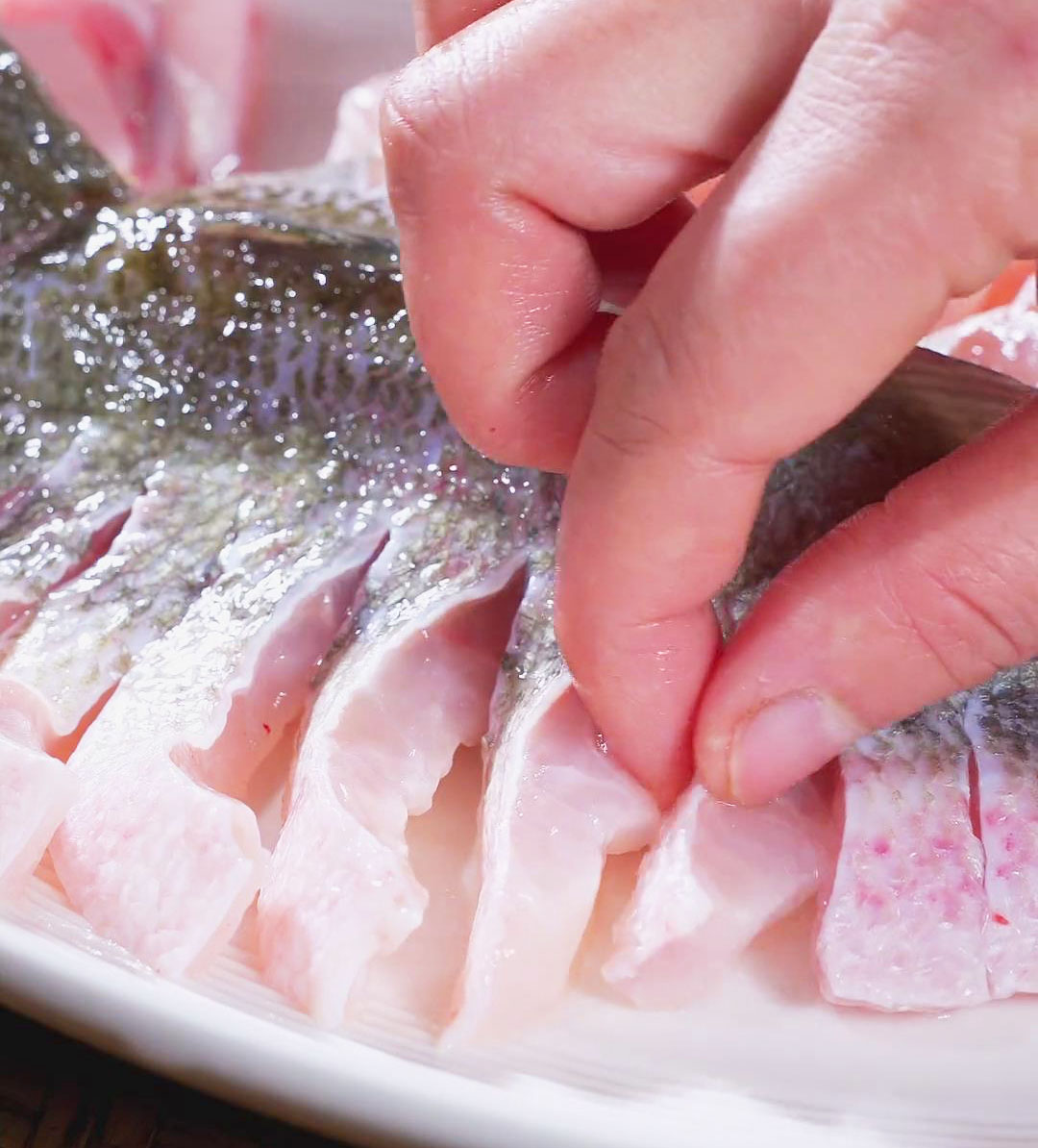
- Brush with lard or oil and steam over high heat for 6 minutes. Set a timer to avoid overcooking and drying out the fish. You can adjust the steaming time according to the size of your fish.
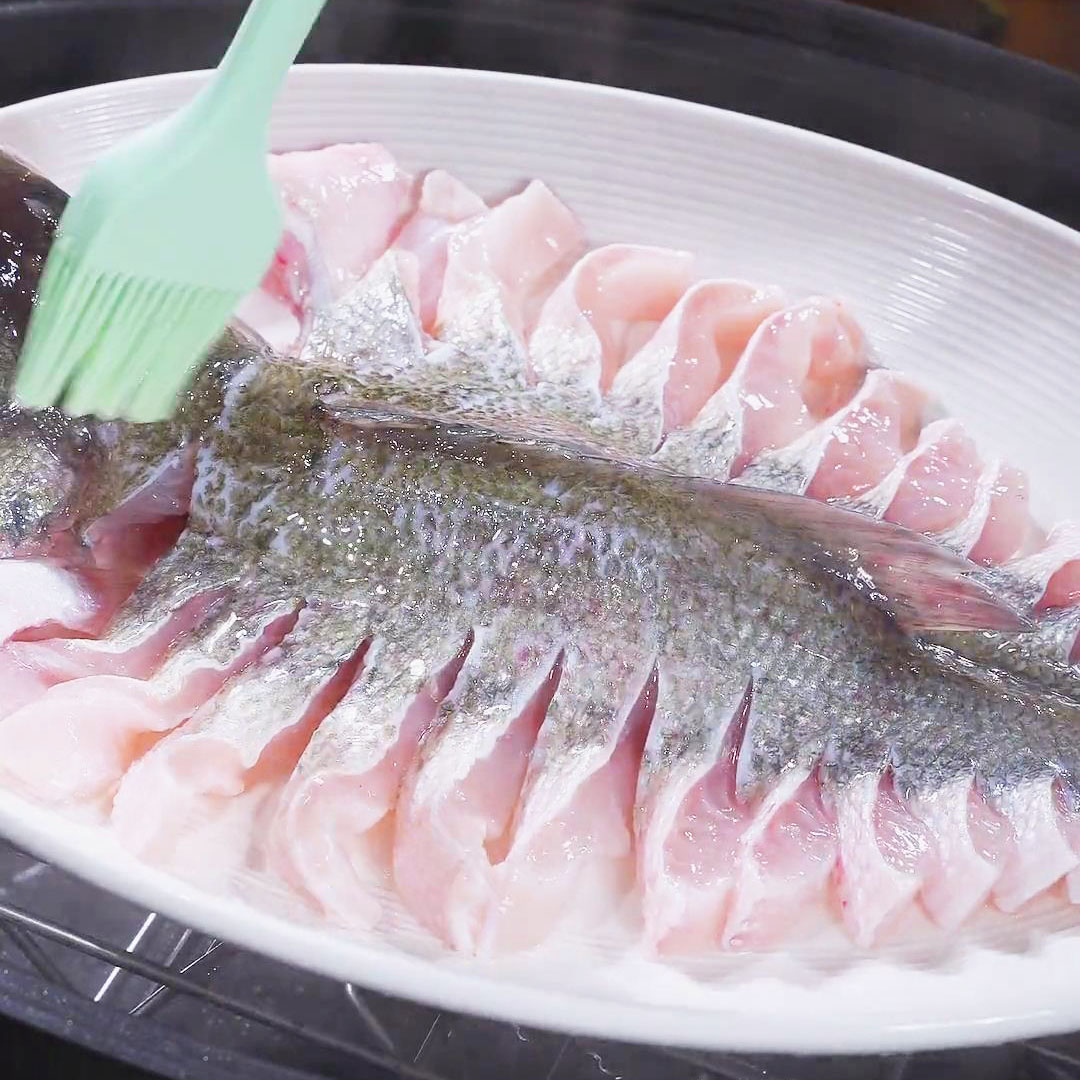
- Meanwhile, prepare the sauce by stir-frying thinly sliced red onions, green onions, ginger strips, and fresh coriander.

- Then, add water, light soy sauce, and a bit of sugar. Mix well.
- Once the fish is steamed, drain any excess liquid.
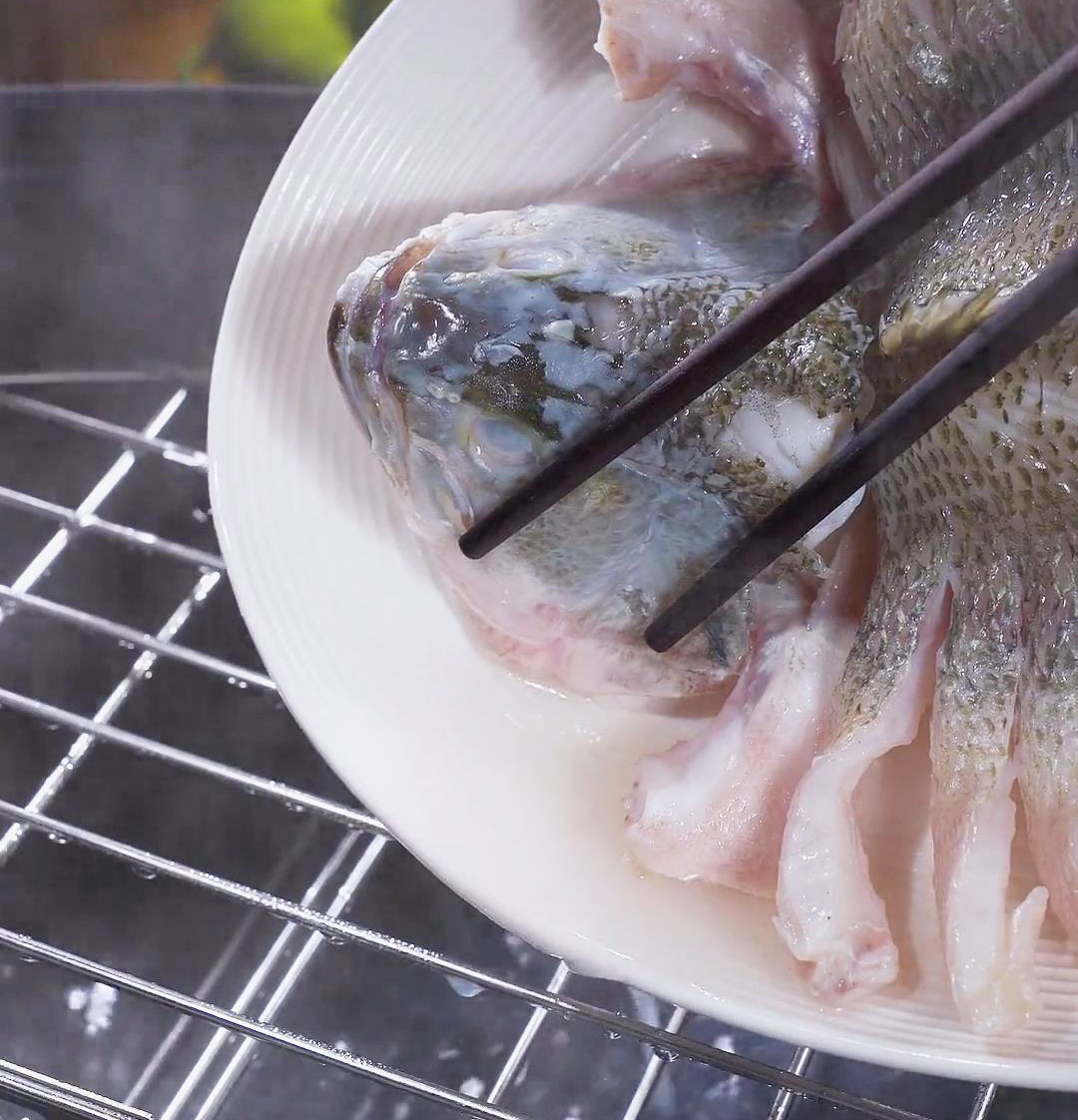
- Garnish with chopped green onions and chili. Then, drizzle the prepared sauce and hot oil.
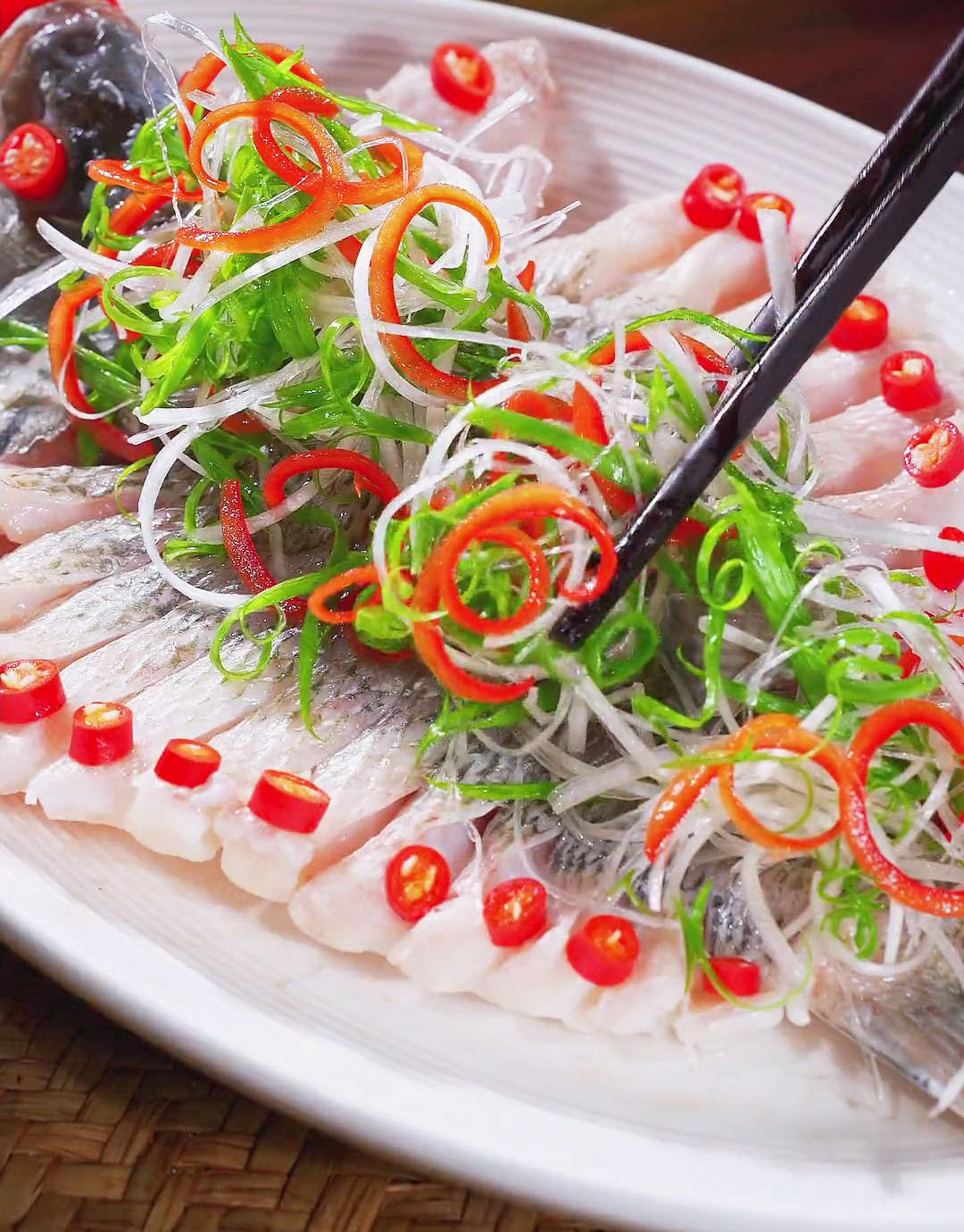
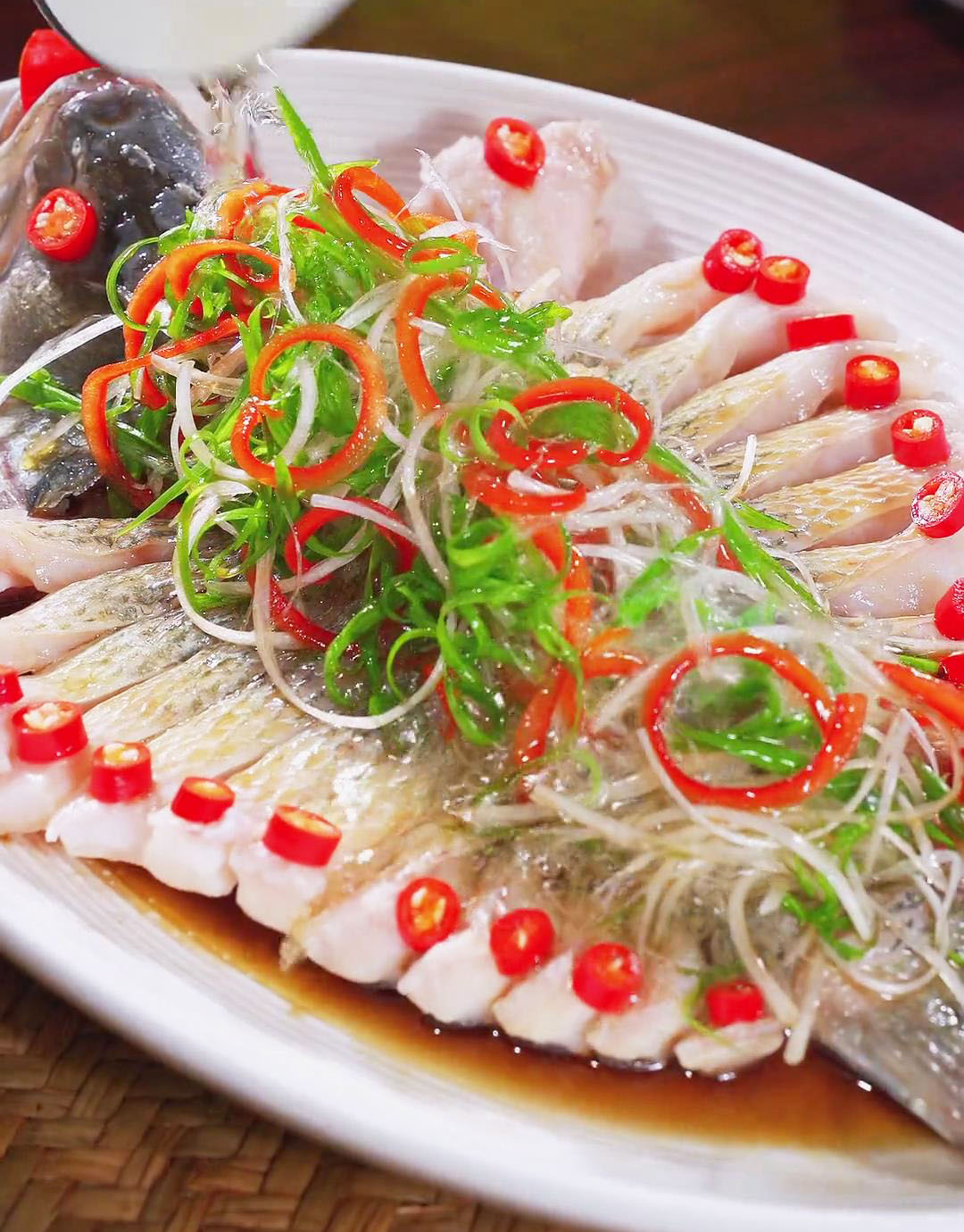
Serve this with hot white rice, traditional Chinese egg fried rice, Nian Gao (Chinese New Year Rice Cake), stir fry rice cakes, or Buddha‘s Delight (Lo Han Jai – 罗汉斋 ).
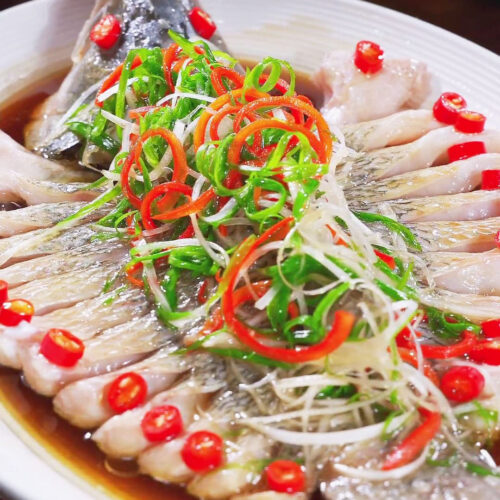
Steamed Fish Recipe
Ingredients
- 1 whole fish I used sea bass.
For the marinade:
- 10 g chopped green onions
- 10 g sliced ginger
- 1 tsp salt
- 1 tbsp cooking wine
- Lard or oil for brushing
For the sauce:
- 1/2 red onion thinly sliced
- 10 g chopped green onions
- 10 g sliced ginger
- 50 g fresh coriander
- 1 tbsp water
- 1 tbsp light soy sauce
- 1 tsp white sugar
For the garnish:
- 1/2 cup chopped green onion
- 1/2 cup chopped red chili peppers
- 1 scoop of hot oil
Instructions
- Chop the fish. Start by cutting off the head and tail, then carefully trim off the middle bone using scissors.
- Take the belly and flatten it. Cut each side of the fish into straight or diagonal thin slices. Cutting the sides helps cook it faster and absorb the flavors better.
- Marinate all parts of the fish with chopped green onion, ginger, salt, and cooking wine for 10 minutes.
- Rinse well with water to remove any fishy odor.
- Drain the fish and place it in a steaming dish. Carefully flip each strip of the sliced belly to let the flesh side face the top.
- Brush with lard or oil and steam over high heat for 6 minutes. Set a timer to avoid overcooking and drying out the fish. You can adjust the steaming time according to the size of your fish.
- Meanwhile, prepare the sauce by stir-frying thinly sliced red onions, green onions, ginger strips, and fresh coriander.
- Then, add water, light soy sauce, and a bit of sugar. Mix well.
- Once the fish is steamed, drain any excess liquid.
- Garnish with chopped green onions and chili. Then, drizzle the prepared sauce and hot oil.

